Aetherdrift is the first Standard release for Magic: The Gathering’s 2025. The set is a big melting pot of varying archetypes and mechanics, with ten different planes being represented across all the color pairs utilizing different ones.
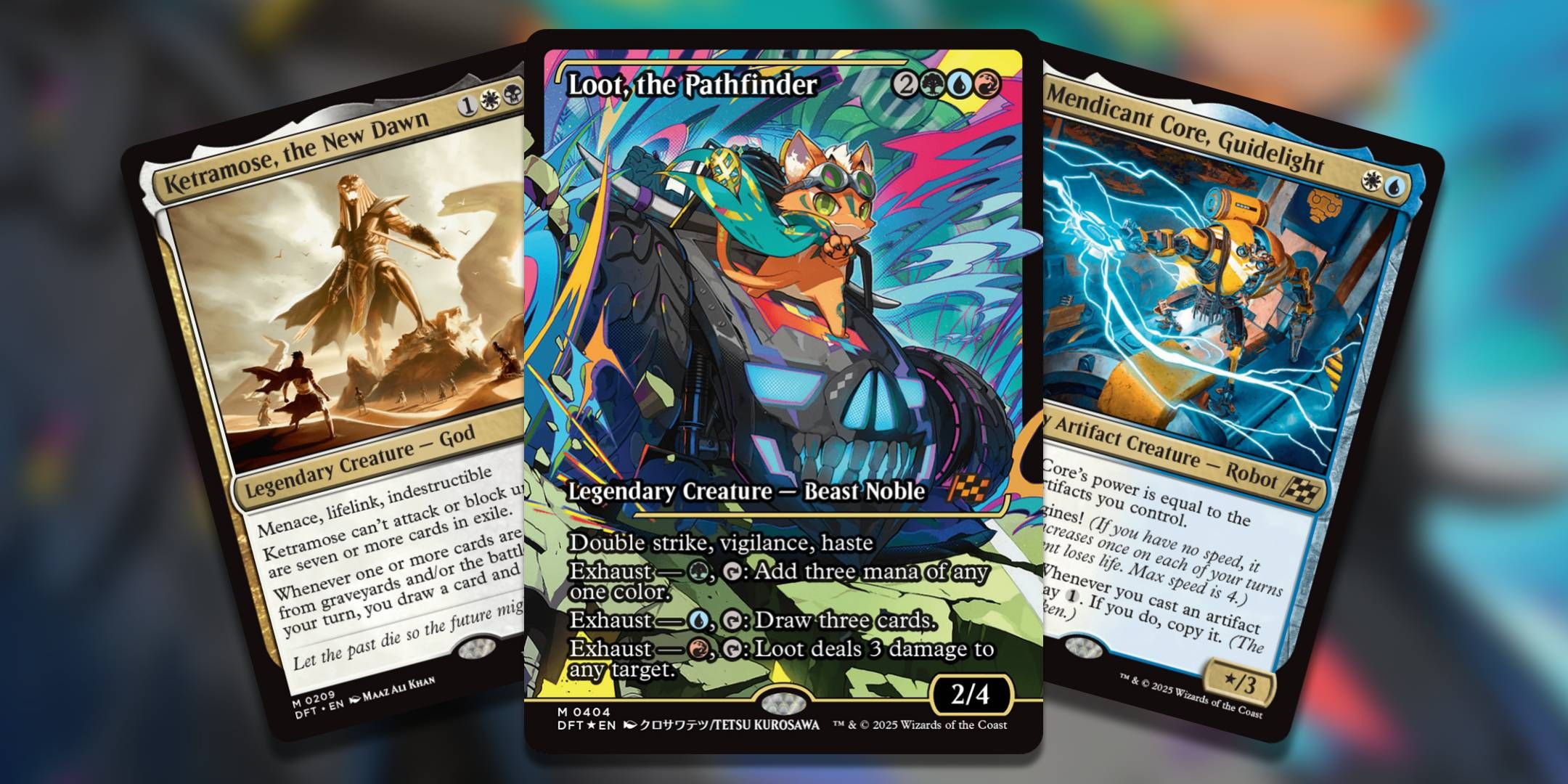
Related
Magic: The Gathering – The 5 Best Commanders In Aetherdrift
Aetherdrift has some snazzy new legendary creatures to build some new Magic: The Gathering commander decks around.
Aetherdrift is a wide Limited set, with cycling alone adding extra depth and deck-building choices in regards to how you want to build your deck. As with every major set release, Aetherdrift comes with ten different Limited archetypes, one for each of the color pairs. While you don’t need to follow the archetypes when you’re building your Limited decks, they are a great baseline for figuring out the best synergies.
Artifact Value (White/Blue)
The Azorius pairing is all about artifacts. There’s a good bit of support to make them easier to cast or get value for having artifacts on the battlefield. The set has a ton of Vehicles, and all Vehicles are artifacts. You want a balance between artifacts and Vehicles so you always have a way to crew them.
If you are planning to draft Azorius, take any card that has affinity on it. You can be more picky about Vehicles, but still want to get a few of them, especially ones that can help you find artifacts like Guidelight Pathmaker. If you manage to open see the rare Mendicant Core, Guidelight, that’s a great sign to pivot to building Azorius, as it lets you copy all your artifacts for one mana.
Artifact Value, as the name implies, has you amassing a battlefield of artifacts and using their effects for value. All of the artifacts in Aetherdrift can help advance your gamestate, and Azorius wants to use that advantage to push themselves to victory by building up your creatures or weakening your opponent’s.
Artifact Bleeder (Blue/Black)
The Dimir color pairing of Aetherdrift is built around artifacts and dealing burn damage. Most of the artifacts available to you in Dimir are going to be Vehicles, with a few cards bringing artifacts alongside them when they enter the battlefield.
Winter, Cursed Rider is one of the main reasons you’d want to lean into Artifact Bleeder. It provides both ward to your artifacts and a board wipe in the later stages of the game. If you are locked into black, make sure to include a removal suite, as it has some solid options to help you out in combat. Demonic Junker is one you’d want to avoid, as its high cost and low stats for its mana value are not worth the build around.
Artifact Bleeder plays like a midrange deck, using removal spells on your opponent’s most problematic creatures while slowly dealing burn damage as your main way to deal damage. The creatures in Dimir aren’t the most powerful, so you aren’t going to be too threatening in combat.
Artifact Bleeder doesn’t have a ton of cards that help its primary strategy, so it’s one of the weaker archetypes you can go for. It’s advisable to only go into Dimir if other options are locked out.
Max Speed Aggro (Black/Red)
Max Speed is by nature a mechanic you want to play with an aggro deck. It’s very good at triggering start your engines thanks to a plethora of cheap permanents that can be cast as early as turn one. The Rakdos pair in Aetherdrift is very good at getting creatures down quickly and turning them sideways to deal damage as quickly as possible.
Start your engines will give you one speed. The speed increases on each of your turns where an opponent loses life. Once your speed reaches four, you have max speed. Speed is an emblem, so it cannot be interacted with outside of very specific cards.
If you notice any card with haste as a keyword, put it in your deck. All of the creatures with haste are great in Aetherdrift, and can help you push your advantage and get your speed up quickly. If you’re lucky enough to get Far Fortune, End Boss you’ll want to go Rakdos, as it’s great at building speed guaranteed and dealing easy damage.
Max Speed Aggro plays very fast. It wants to bring your opponent’s life total to zero before they ever have a chance to set up. As such, you want a lower mana curve to make sure you can make your battlefield too hard to deal with. Thanks to black side, you’ll have access to useful removal to keep your opponent’s battlefield clear for your attackers.
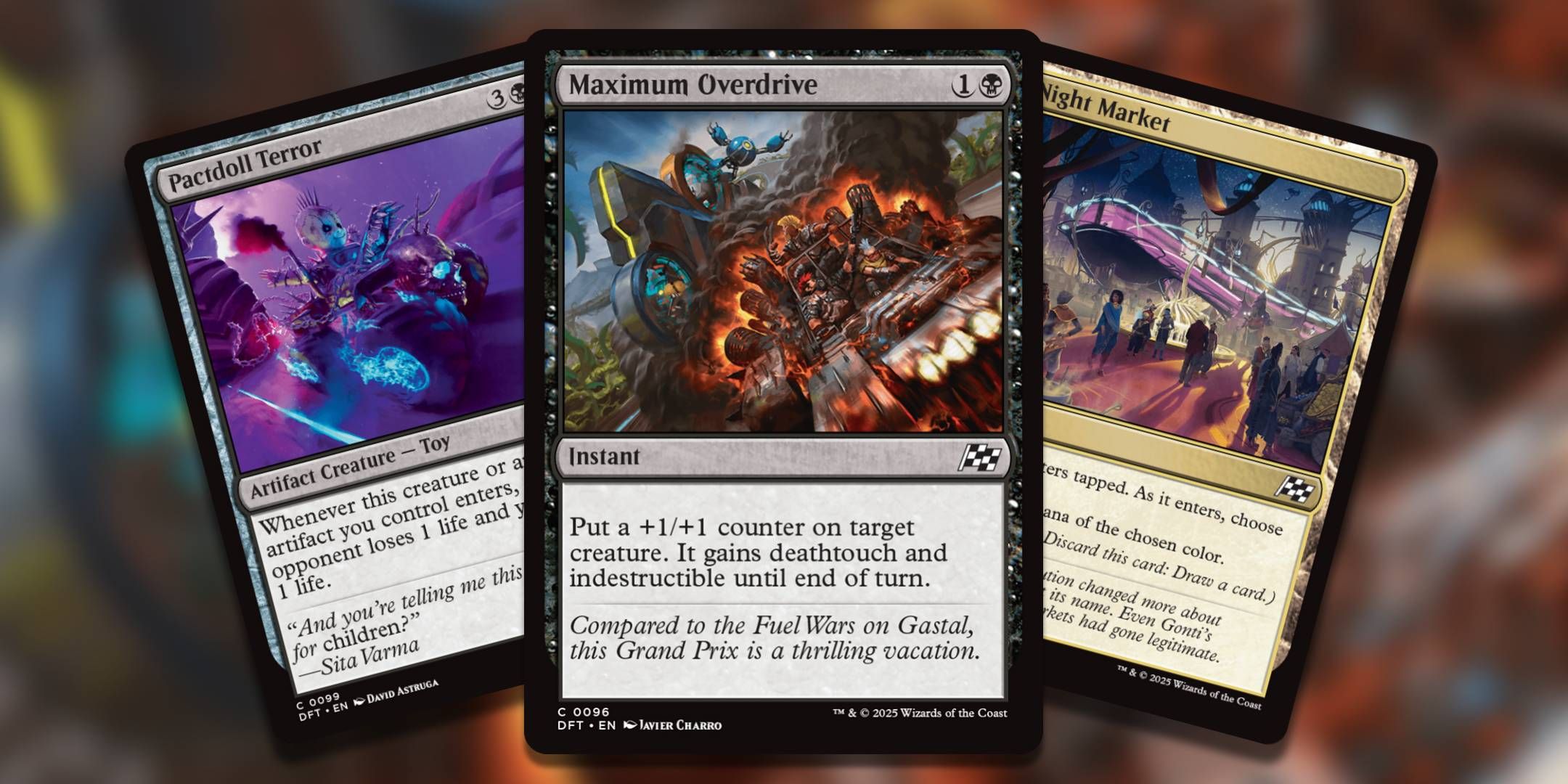
Related
Magic: The Gathering – The 10 Best Commons In Aetherdrift
Rev up your engines, these common cards from Magic: The Gathering’s Aetherdrift set can round out any limited deck thanks to their uses.
Exhaust Midrange (Red/Green)
The Gruul archetype is built around the exhaust mechanic. Gruul is midrange, meaning you’ll be putting down low mana creatures while controlling the battlefield until you’re ready to start getting explosive turns going. For Gruul, this is largely giving your creatures stat boosts.
Exhaust abilities are abilities that can only be activated once. If a creature leaves the battlefield and returns in any way, it will “forget” it used the exhaust ability and you can use it again.
Redshift, Rocketeer Chief is one of the best cards you can use for Exhaust Midrange, as it makes it easier to activate exhaust abilities. Rocketeer Boostbuggy and Boom Scholar are other cards to look out for. There are a lot of strong cards, but you have to be lucky enough to open the best support cards (something hard to do since a lot of them are rare or mythic).
The deck takes a while to get going. It’s about building up your resources and once you have a ton of mana, start activating your exhaust abilities. This leads to a snowball effect that can lead you to victory.
Vehicles And Mounts Midrange (Green/White)
The Selesnya pairing has a very straightforward archetype. Vehicle and Mounts midrange is, as expected, all about Vehicles and Mounts. You want as many of both as possible. A Mount doesn’t need to be saddled, and can even be used to crew your Vehicles if they’ll be more impactful than the Mount.
Caradora, Heart of Alacrica is a good sign to go Selesnya in your Limited pool, along with Lagorin, Soul of Alacria (which is easier to get since it’s only an uncommon). There are a ton of Mounts and Vehicles to choose from, thanks to both types having cross over with other archetypes.
The Selesnya style of Mounts and Vehicles plays the slow game, slowly amassing value before swinging in with your best Mounts and Vehicles. White has some solid removal options, which help to control the battlefield until you’re ready to start attacking.
Max Speed Attrition (White/Black)
Orzhov in Aetherdrift is built around the max speed mechanic. With black and white, it has a Zombie sub-theme along with one that brings creatures back from the graveyard to keep using them. Max Speed Attrition offers a ton of value once you hit max speed, and helps you claw your way back from the verge of defeat.
If you see a card that can bring a card back from the graveyard, put that card in your deck. Risen Necroregent is one of the best cards for committing to Max Speed Attrition, as it will constantly provide you with 2/2 Zombie tokens. White and black both have the best removal cards too, helping to keep any problem creatures off the battlefield.
Max Speed Attrition is about using your resources early to stay in the game, and make a comeback in the later stages once you hit max speed. The deck is very resilient, thanks to a mixture of constant value and being able to reanimate your creatures if they ever get removed.
Discard Aggro (Blue/Red)
Cycling is a major mechanic in Aetherdrift, which is perfect for the Izzet archetype. Discard Aggro wants you to discard as many cards as you can while gaining value for doing so. Cycling is the best way to do so, as you’ll always get a card back after you discard it. There are a ton of different ways to draw and discard, powering up your creatures.
Even if you can’t cast them, if you are playing Discard Aggro, you can include cards with generic cycling costs that aren’t red or blue. They essentially act as a way to thin your deck while triggering your abilities.
Captain Howler, Sea Scourge is the perfect card for Discard Aggro if you open it. Fearless Swashbuckler pairs well with Vehicles and Pirates (and Pirates make up most of the Izzet archetype cards). You can pair it with generic cards with haste for some extra “oomph.”
Izzet includes access to both counterspells and removal, letting you have some versatility to pivot into a more midrange deck if you need to with the sideboard. You want to get your best creatures down as quickly as possible and then start cycling cards away.
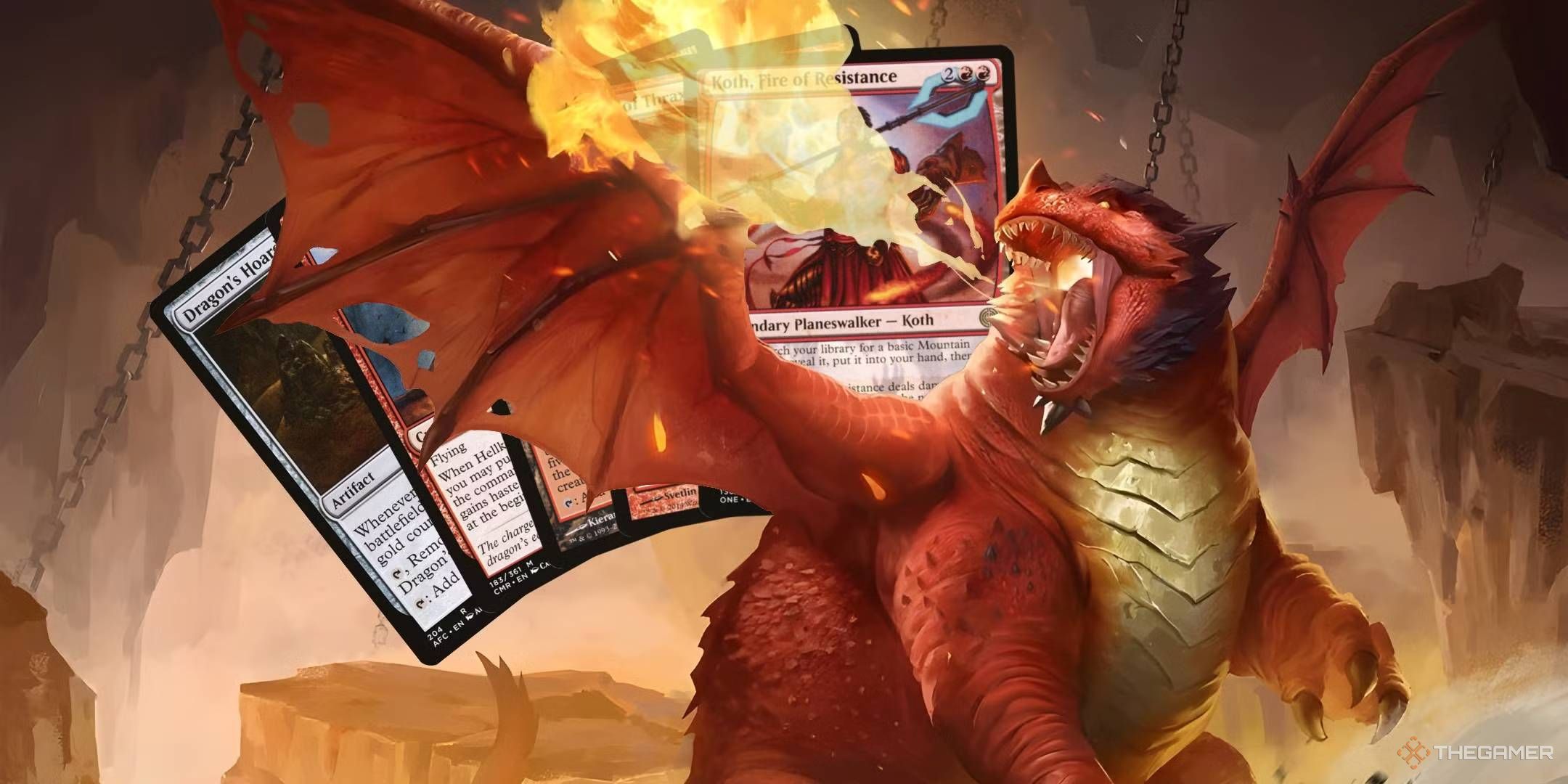
Related
Magic: The Gathering – Themberchaud Commander Deck Guide
The iconic D&D red dragon Themberchaud can be your commander in MTG. Learn how to build a proper deck for him in this guide.
Graveyard (Black/Green)
The simply named Graveyard is the Golgari archetype of Aetherdrift. Graveyard wants you to load up your graveyard with creatures to bring them back later. There are a lot of ways to mill cards, which help you to fill it up with everything you’d need. Alternatively, you can discard cards directly into the graveyard to trigger other effects.
Aatchik, Emerald Radian in your packs means you want to lean to the Graveyard archetype. If you are going the Golgari route, take any card that can reanimate permanents from the graveyard. This prevents your best cards from getting stuck in the graveyard and allows you to bring them back if they ever get removed.
Graveyard can be slow in the early game, but makes up for it with an explosive late-game. With how easily you can fill up the graveyard, you can get a threatening battlefield with one properly timed reanimation spell. The black half nets you solid removal, which helps to get rid of your opponent’s creatures early on until you’re ready to start making your own big plays.
Vehicles And Mounts Aggro (Red/White)
Boros is one of the aggro archetypes of Aetherdrift, with it being focused on Vehicles and Mounts. There are a ton of powerful Vehicles and Mounts in both colors, many with haste built-in already (primarily in the red half). You want to constantly be casting your cheap Vehicles and Mounts to quickly dwindle your opponent’s life down.
Kolodin, Triumph Caster is the best card you can ask for with Vehicles and Mounts Aggo, as it turns any one of them into a creature that can attack right away and get its effects off. Any Vehicle or Mount that has haste you want to draft into your deck. You want to make sure to get removal in your deck to in order to keep the battlefield clear for your attackers.
With Vehicles and Mounts Aggro, you want to constantly be attacking. Vehicles are primarily what you want to be attacking with, as they generally have more useful keywords and abilities. Make sure to get some cheap creatures as well so you always have a permanent to either crew or saddle your Vehicles and Mounts.
Exhaust Ramp (Green/Blue)
Simic in Aetherdrift builds up a ton of mana to activate various powerful exhaust abilities. A lot of the best exhaust abilities do cost a lot of mana, so you want ways to generate mana quickly so you can use them as quickly as possible.
If you’re playing with exhaust, Elvish Refueler is a must-have, as it lets you keep using exhaust abilities even after you used them the first time. Any kind of creature that can tap itself to add mana is one you’ll want in your deck too. Most permanents with exhaust are solid on their own, and exhaust acts as more of a bonus, so draft as many exhaust cards as you can.
Exhaust Ramp wants you to set up your battlefield with mana generators and cheap creatures to then start using all your exhaust abilities in the late-stages of the game to get the most value out of them. It’s a slow build-up, but one that’s worth the effort as once you have the mana, you can keep exhausting and pushing your advantage to victory.

Next
Every Card In Magic: The Gathering’s Aetherdrift
Start your engines and take in the fumes with Magic: The Gathering’s Aetherdrift.
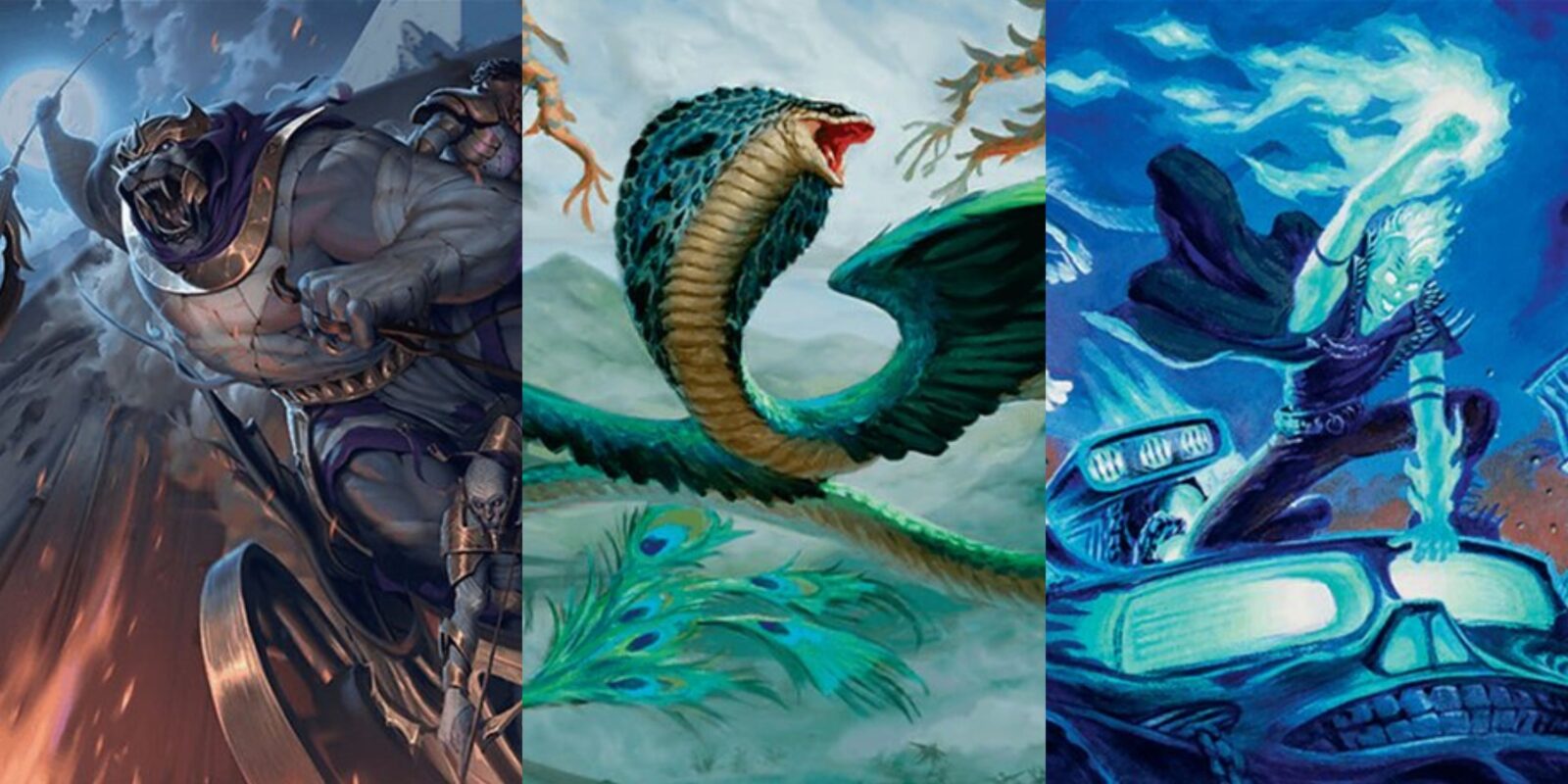
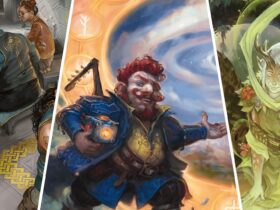

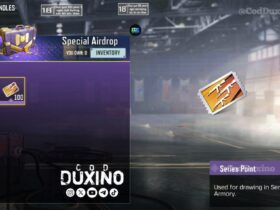


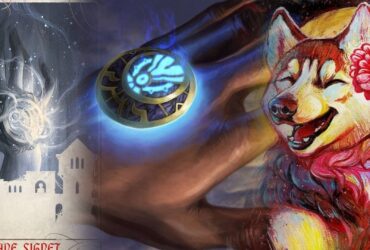
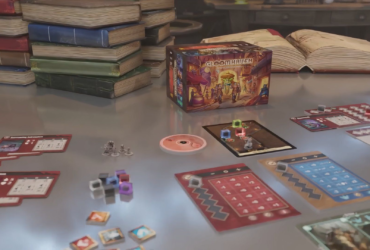
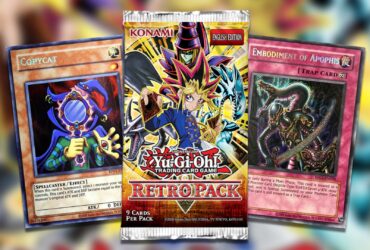

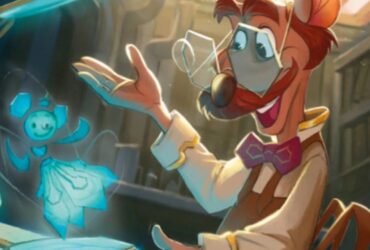
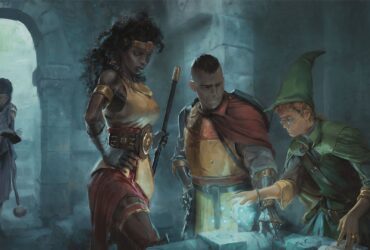
Leave a Reply